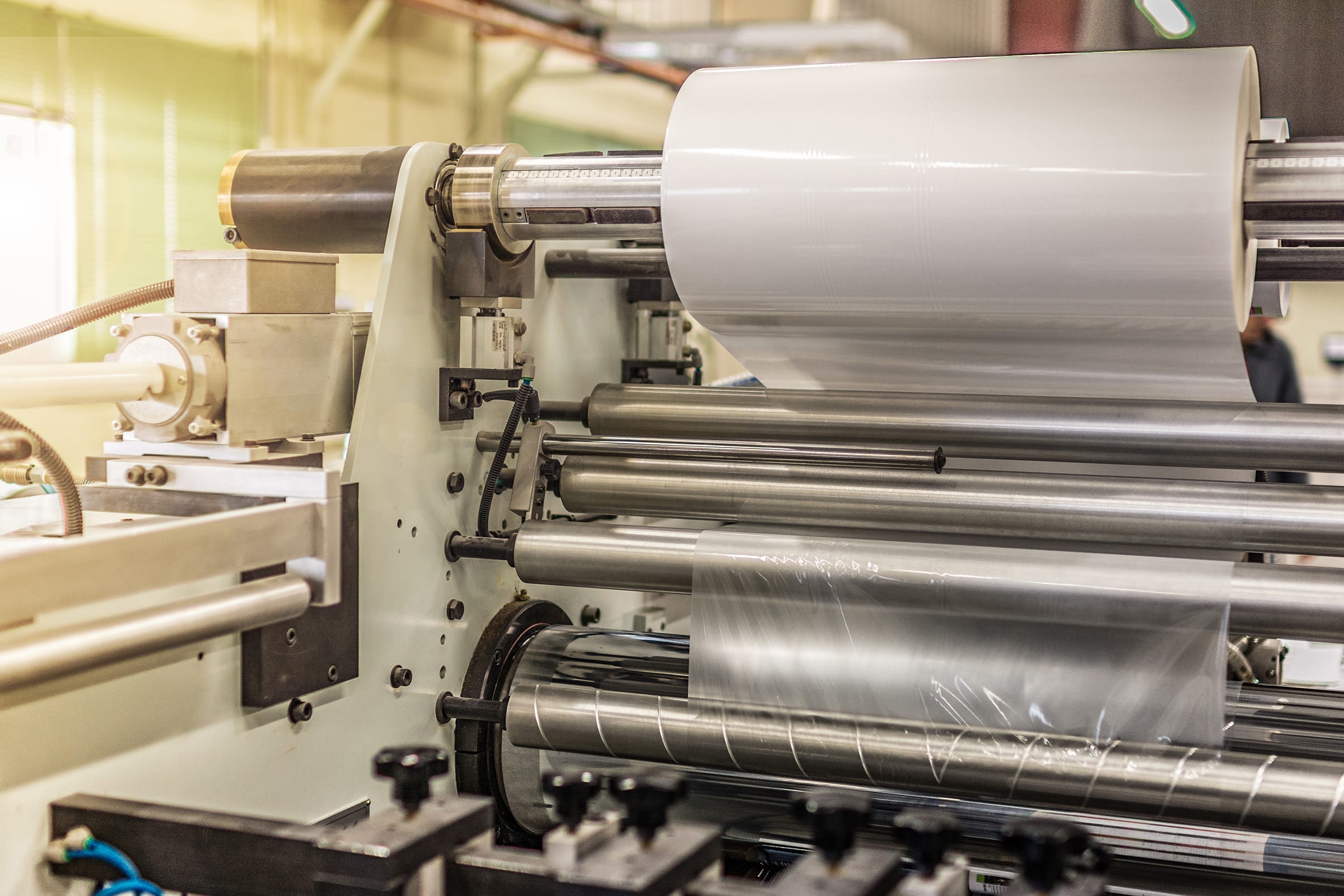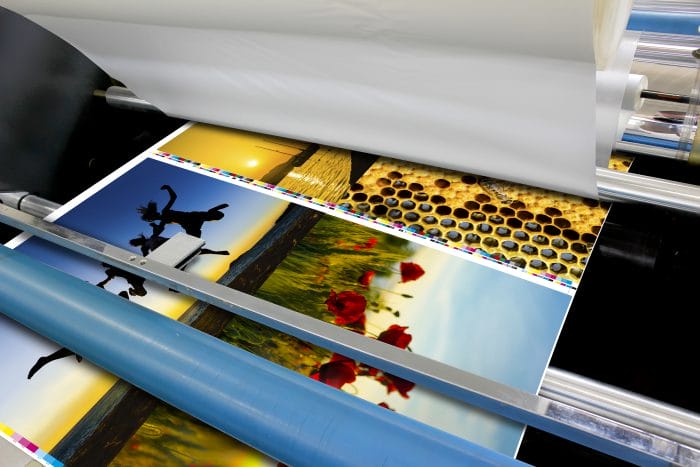When self-publishing authors print their work and have it bound, many times they also choose to use a form of protection on the cover of the book. The two forms of this process that are commonly used in printing are called gloss lamination and soft touch lamination.
Each type has its own particular strengths and best ways for it to be used, but the process of lamination is versatile and has multiple applications within the printing industry. Let’s take a look at all things lamination and how to choose which one to use in your next project.
What Is Lamination?
Lamination is the general term that describes plastic sheeting that is applied through a heat process to printed matter. Lamination creates a barrier that insulates the material from damage due to moisture and stains as well as tears or other hazards that could harm the material.
The process adds strength and rigidity to the material and can even amplify the colors used in printing. Gloss and soft touch lamination are two of the popular types of lamination offered for Perfect Bound, Plastic Coil and Wire-o Bound books. But lamination can be used on a variety of products other than just books.
Because its tight seal protects the inside contents well from moisture or damage, lamination is perfect for any kind of item that is frequently handled or contains important materials that needs to maintain their visibility in a high-traffic area or location.
Other Uses for Lamination
- Bookmarks
- Business cards
- Marketing materials
- Membership cards
- Operating instructions
- Price lists
- Restaurant menus
- Reusable tags
- Safety signage
Gloss Lamination
The process of lamination with gloss produces a shiny, clear finish with a glass-like appearance. This high-strength lamination is often used for items that need extra protection or will be handled frequently. Gloss lamination is highly reflective due to the glassy finish it produces on materials.
Like soft touch, gloss lamination can enhance the durability of the products it covers and protects materials from fingerprints, smudges, dirt, grime, and tearing. Gloss also makes items covered easier to read and it enhances colors and printing so the product may appear more professional. But you should choose gloss lamination for a few specific reasons.
Why Choose Gloss?
1 It provides a high level of protection for items that are regularly handled. Gloss is very durable.
2 It makes the colors pop. Use gloss when you want to enhance the printed graphics or pictures underneath.
3 It is highly reflective. Only use gloss when glare won’t be a problem. Using gloss in brightly sunlit areas may be problematic in some cases.
4 It is less expensive than soft touch. Use gloss when pricing is a concern, because it will provide excellent protection for the materials at a lower cost.
Soft Touch Lamination
By contrast, soft touch lamination creates a low-gloss finish on the materials it covers. Soft touch lamination creates a sophisticated finish to the materials it covers while providing a matte, soft look at the same time. Like gloss, soft touch lamination provides a higher level of protection to the items it covers.
Soft touch lamination is also clear, but the matte finish absorbs light while gloss reflects it so it can be used in brightly lit areas while maintaining excellent readability without glare. Soft touch lamination has a velvety feel and looks more elegant than gloss does, so it is perfect for books, business applications, and marketing materials because the finish contributes to the overall feel and impression of the product.
Why Choose Soft Touch Lamination?
1 The item to be laminated will be under direct lighting. The matte finish of soft touch is not reflective so it is perfect for using underneath lighting or in direct sunlight light like store signage might be.
2 The matte finish of soft touch gives an elegant impression. Use soft touch lamination when your finished product needs to have an elevated look.
3 Use soft touch lamination when your materials contain muted or subdued hues or tones. The matte finish of this style of laminate does not enhance bright hues, so it looks best with softer colors.
Choosing Gloss or Soft Touch Lamination
Choosing the right type of lamination mostly depends upon the use of the material once it is covered.
- Materials that will be used in brightly lit areas: choose Soft Touch Lamination
- Materials that are made with bright colors: choose Gloss Lamination
- Materials that need to look natural without glare or reflection: choose Soft Touch Lamination
- Covering items with soft or muted colors: choose Soft Touch Lamination
- Materials that will be handled a lot: choose Gloss Lamination
- When cost is a concern: choose Gloss Lamination
Other Aspects of Using Laminated Paper
Using lamination to protect paper or other materials is a great way to increase durability and extend the life of the material with the plastic coating of lamination. Items that are laminated won’t have to be replaced as often due to the protective covering even with repeated usage and handling. Items are more impervious to damage, dirt, grime, or other contamination that can harm materials that are touched frequently.
Laminate can also be applied to one side of a material instead of both sides, too. But choosing lamination as protection also means that you must determine other aspects of the plastic coating before applying and bonding the plastic to your materials, like the thickness of the lamination, the shape of the corners, and the edging style.
Thickness – The thickness of the lamination determines how flexible the item will be. Materials that need to bend, flex, or fold should use a coating of 3 mils or less lamination. For items that do not need to bend or fold, using a thicker coating of lamination is appropriate.
Shape – The shape of the lamination refers to the corner of a product that is laminated. Corners can be either square or rounded. Squared corners may cost less in production than rounded corners because they require less trimming to create. But squared corners that are used on thick lamination can be very sharp and may be unsafe for some applications.
Rounded corners on the other hand are excellent for use with thicker lamination because they are less likely to cut or stick hands or fingers with usage. Generally, rounded corners are always suggested for use on items that will be frequently handled by anyone, but especially by children since they are less likely to hurt little fingers. Rounded corners also look professional and create a polished finish for items that are laminated so using them can make a project look more sophisticated as well.
Edging – The edging of a laminated surface refers to where the laminate product ends. The plastic coating can end flush with the material it is covering without extending over the edge to create a clear border or edge. This flush mounting is good for products that won’t be in danger of contamination like oils, greases, or liquids seeping into the base material. But many products are covered with a sealed edge of lamination.
This method extends the lamination from both sides of the material and produces a clear edging around the base material to completely encase the product. Sealed edges provide a higher level of protection for laminated products because there is no opening for moisture, contamination, or other products to touch the base material.
Laminating Your Project
Authors who have a book or project to publish may choose to laminate all or part of the materials to increase durability and extend the life of the project. Choosing the right lamination materials is key to self-publishing a project you will be proud of.
Make sure that you are working with a trusted printer like Dazzle Printing to guarantee that your self-published project will be completed with quality materials that you know will make your work look great. Whether your book needs a bright, flashy cover or a more muted, soft hued-design, choosing the right lamination style will be easier when the cover of your project perfectly matches the feel and style of the contents.
Regardless of what style of protection is used to coat a book or project, authors who choose to self-publish their work can be confident that using a laminated finish on their work will help their hard work have an even longer life than books or projects that are left uncovered.







